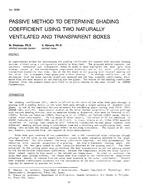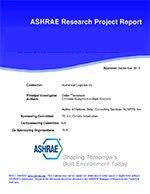Click here to purchase
Within a European research project there is an ongoing multinational effort to develop a conceptual framework for monitoring the effectiveness of energy efficiency measures (EEMs) applied in European residential buildings. The paper provides an overview of the efforts and outlines the results from a pilot action in Greece for identifying the most popular EEMs for residential buildings, the differences of estimated and real energy savings from EEMs and derives adaptation coefficients to support a bottom-up assessment of Hellenic residential building stock energy performance. The work exploits the national energy performance certificates data, complemented by a field study to collect evidence of actual energy consumption data from residential buildings before and after EEMs, and behavioral surveys of occupants. The average ratio of actual to calculated primary energy use range from 10% lower for single dwellings to 42% higher for multifamily dwellings. Popular EEMs include building envelope refurbishment (e.g. installing double glazed windows, adding thermal insulation) and upgrading mechanical installations (e.g. replacing an oil-fired boiler with natural gas or a central heat pump, replacing a burner, installing a solar collector). Findings reveal that the average source energy savings average 17%, while specific EEM savings can even reach up to 43%.
Citation: 2016 Winter Conference, Orlando, FL, Conference Papers
Product Details
- Published:
- 2016
- Number of Pages:
- 8
- Units of Measure:
- Dual
- File Size:
- 1 file , 880 KB
- Product Code(s):
- D-OR-16-C071


